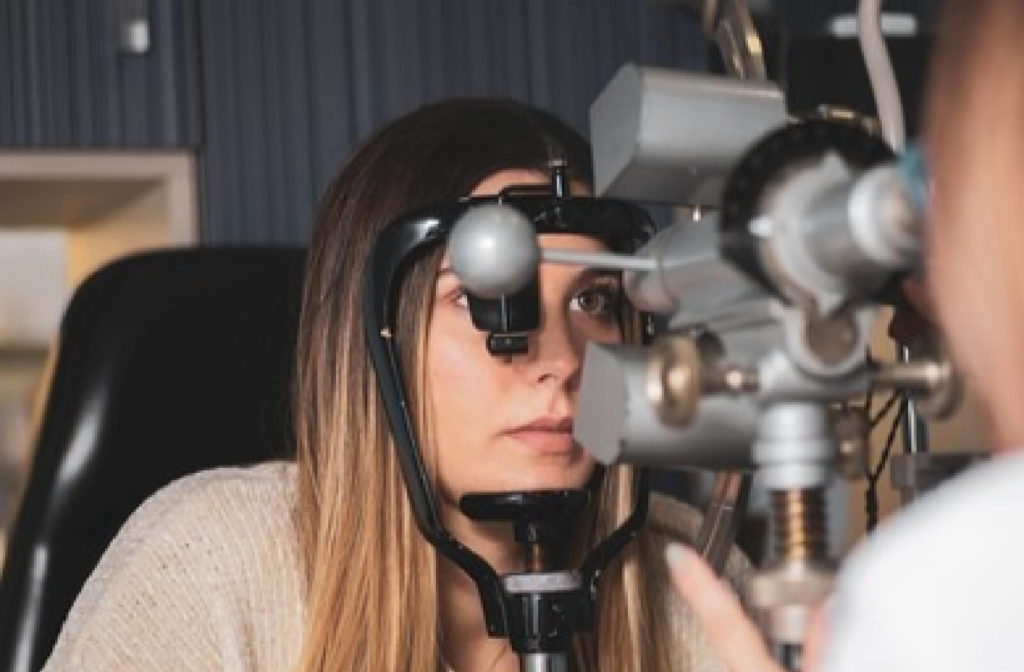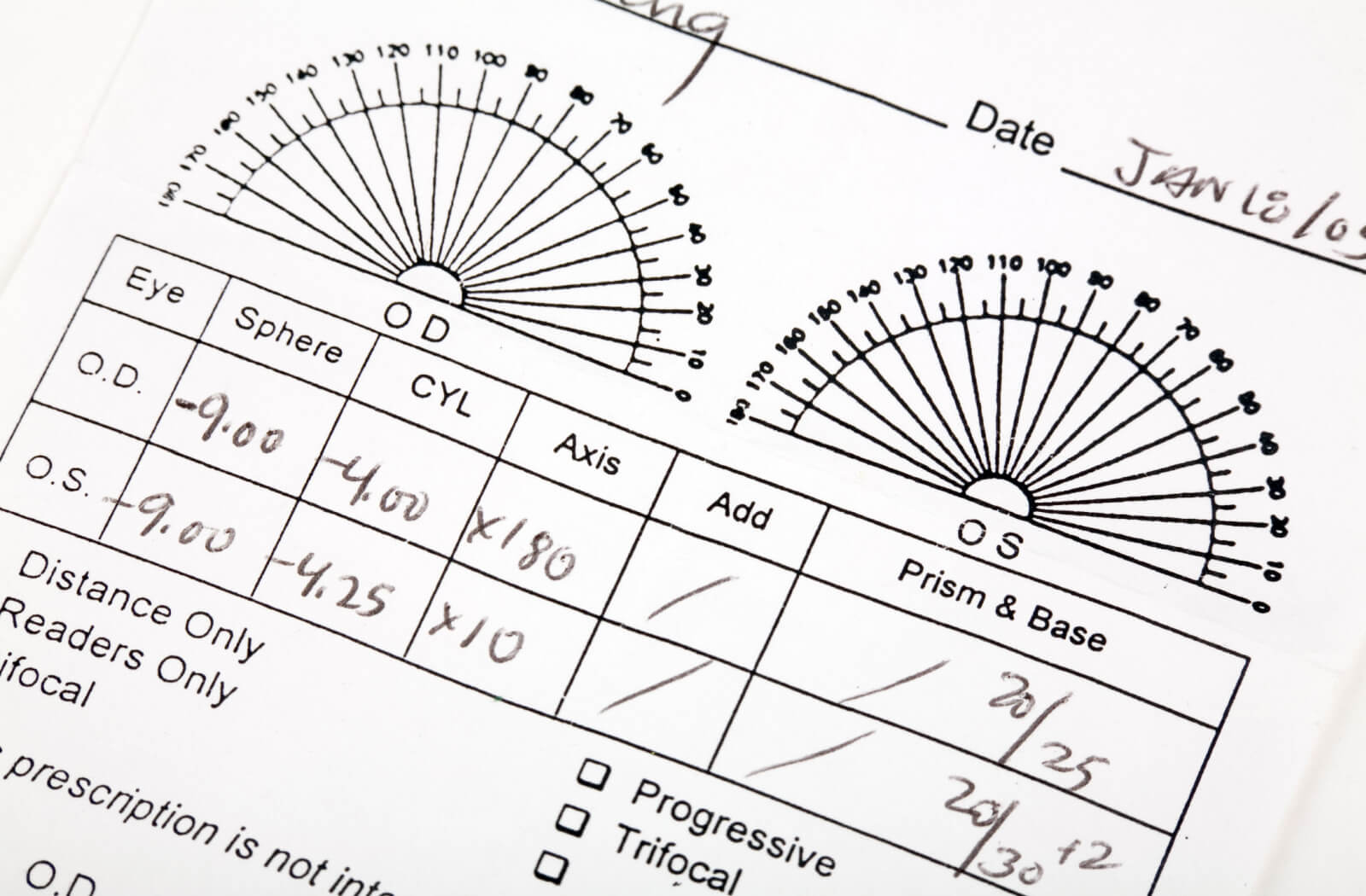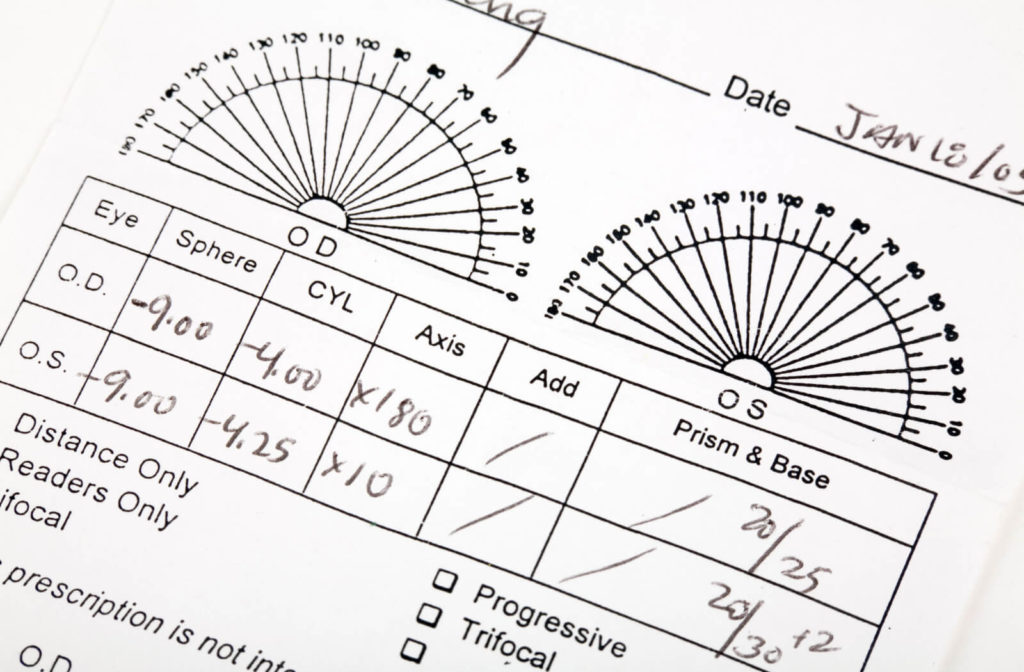Not only does seeing clearly improve our quality of life, but it improves our safety at work and play. Contact lenses and prescription eyeglasses are 2 vital steps in the quest for 20/20 vision.
Getting frames that fit perfectly or comfortable contacts is only half the battle. You’ll need an up-to-date prescription for each.
Your glasses prescription and your contact lens prescription will be different. This is due to where the lens sits in proximity to your eyes. The 2 prescriptions will also include different measurements because a contact lens should additionally adhere to the shape and size of your eye.
Your eye doctor can explain your prescription at your exam and get you ready to peruse your next favorite eyeglasses frames, or set you up with a comfortable contact lens option.

Why Are Contact & Glasses Prescriptions Different?
The primary thing that changes the prescription between contacts and glasses is the distance from the eye. A contact lens is designed to sit directly on your eye’s surface. In contrast, the lenses of your glasses sit approximately 12 millimeters (mm) away from your eye.
Another significant difference is the extra measurements or specifications needed for contact lenses. These specifications account for things like size, power, or the type of refractive error.
Making Sense of Prescription Abbreviations
Unless your eye doctor explains what the abbreviations on your prescriptions are, they can be confusing.
Contact Lens Prescription
- OD and OS: You’ll usually find these at the top of your prescription with numbers near them; these are your right eye (OD) and left eye (OS).
- PWR or SPH: Power and sphere are 2 words to describe the refractive power. This is how much correction is needed to bring your vision as close to 20/20 as possible. The number may be preceded by a + or – symbol. If you have one of these symbols, it means you have far or nearsightedness, respectively.
- BC: This stands for base curve, the curvature of the contact lens’ back. This is an important measurement to ensure a seamless fit as the lens sits on your eye. The base curve ensures the best possible integration with your lens and cornea.
- DIA: This stands for diameter. It is the measurement across the contact lens surface. This measurement must be accurate for comfort because it determines where the lens sits on your eye.
- CYL (for toric lenses): The cylinder value determines the power needed to correct astigmatism.
- Axis (for toric lenses): Unlike a traditional lens that has no orientation in your eye, a toric lens needs to orientate itself a certain way. The Axis measurement determines this orientation.
- ADD (for bifocal/multifocal lenses): ADD determines the amount of magnification added to certain areas of the lens to assist with seeing objects up close.
Glasses Prescription
You’ll notice that many symbols and numbers on your glasses prescription are the same as you’d find on a contact lens prescription. But there are a couple of things worth mentioning:
- There typically won’t be a diameter measurement on a glasses prescription
- The prescription may be different from your contact lens prescription
Choosing Your New Eyewear
After your eye exam or contact lens fitting, you’re on to the fun part: picking frames that you love or experiencing new contacts.
Your lenses are prescribed by your eye doctor, including the brand and style of contact lenses. This is because each brand offers different benefits for your eyes.
Glasses Lens Types
You get to enjoy quite a bit of freedom when choosing new glasses lenses. Your optometrist or optician can review your lens options with you. Some lens options may include:
- Blue light filter coating
- Anti-glare coating
- Multifocal or bifocal lenses
- Scratch-resistant coating
Frame Styles
Your glasses should make you feel good. If you like big, bold frames, you shouldn’t be held back by a lack of selection, and the same goes for timeless, chic eyewear.
Dr. Jennifer L. Shane & Associates offers several popular eyewear brands to choose from, and we carry a wide range of styles to suit your personal brand so you can feel great about your glasses.
Get Your Updated Prescription & Eyewear
At Dr. Jennifer L. Shane & Associates, we’re proud to offer many different brands and styles for you to choose from. Also, we have contact lens options for most eyes. Plus, we direct bill to various providers.
Talk to us today about your options or to book an exam. Our professional team can help you feel great about your vision and eye comfort.



